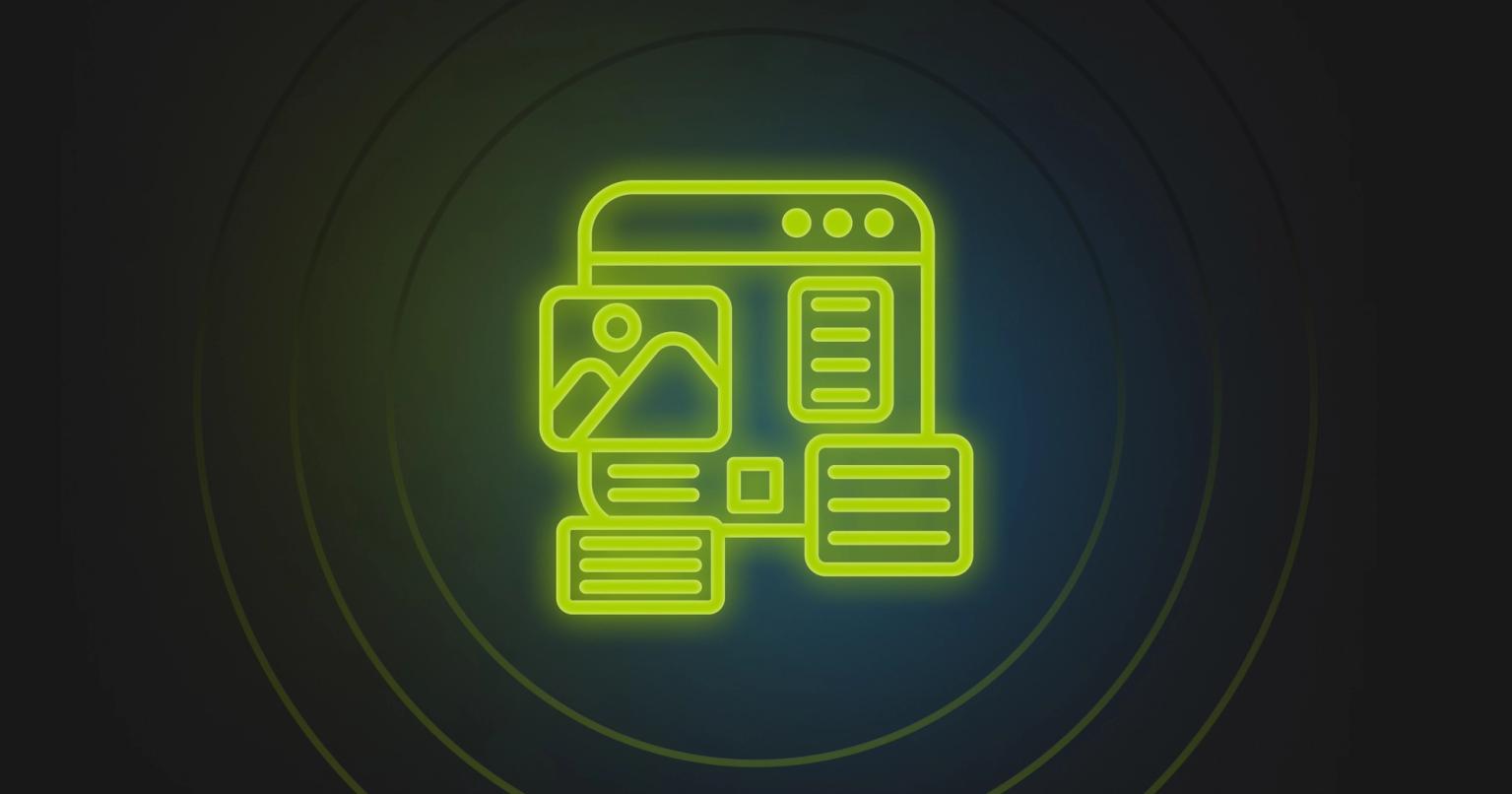Marketing Campaign Workflow Examples

Summary
Explore marketing workflow examples that help streamline campaign creation, improve efficiency, and maintain brand consistency.
Scaling marketing campaign creation can feel overwhelming when you're juggling limited resources and tight deadlines while trying to maintain high quality across all content.
To scale your marketing campaigns effectively, you need to harness the power of marketing workflows. These workflows help you create consistent content efficiently and effectively.
A good workflow provides your entire team with a clear process to follow, building in quality safeguards while keeping everyone in your organization informed. In this blog post, we'll examine marketing workflow examples and show how they can boost your campaign creation process.
What Are Marketing Campaign Workflows?
A marketing campaign workflow is a systematic approach for developing campaigns using a combination of tools, technology and process. Workflows are predefined processes that can incorporate automation and technology to help streamline campaign creation.
Workflows matter for enterprise teams because they keep your team aligned on objectives and clarify what needs to be done to get a campaign out the door. With a workflow system, you improve efficiency, time to market, and overall campaign quality.
Let's look at a framework for campaign workflows that you can apply to any marketing campaign activity.
Framework for Campaign Workflows
Having a campaign creation framework allows you to apply consistent steps across any campaign to ensure high-quality, on-brand results. A standardized approach keeps your entire team aligned and helps them anticipate what needs to be done when a new campaign kicks off. Enterprise teams particularly benefit from this structure as they work across distributed organizations, collaborate with various teams and departments, and need to keep operations running smoothly.
Here's a simple five-stage framework you can use:
- Request
- Create
- Test
- Collaborate
- Execute
Stage 1: Request
Ensuring high-quality output requires high-quality inputs. Setting up clear requirements in your campaign request flow allows you to define project objectives and scope. Going a step further, having a standardized request process enables anyone in your organization to make campaign requests and provide the necessary information, context, and requirements for effective handling.
Integrating with campaign planning tools, such as your content or marketing calendar, is a best practice, as is connecting with project management tools to ensure request visibility. In short, having a good request workflow allows you to quickly respond to campaign requests and move them smoothly into the next stage.
Stage 2: Create
At this stage, you're moving from concept to execution. You've reviewed the request brief, understand the requirements, and can start building campaign assets. Here, you may leverage templates and modules already built for your marketing organization. This gives you a quick start using approved assets and styles.
This is where a tool like Knak is so helpful, allowing you to create templates and modules that everyone in your organization can use to quickly move from request to creation. During this stage, you'll also experiment with copywriting and design while maintaining a clear understanding of your distribution channels.
Stage 3: Test
When thinking about multichannel campaigns, we need to ensure quality across all platforms. This means verifying image resolutions fit each platform, emails are mobile-responsive, and landing pages follow responsive design best practices. It also means checking your automation flows, such as ensuring webinar signup flows result in registrations in your webinar provider's platform.
Having a comprehensive testing strategy ensures consistently high campaign quality and allows you to address any errors or issues quickly, before going to market.
Stage 4: Collaborate
The collaboration stage is especially important for enterprise organizations where things can move very quickly. Managing stakeholder feedback is essential to the campaign creation workflow. Getting last-minute feedback from an unexpected stakeholder can derail launch times and disrupt your well-laid plans.
Having a clear, step-by-step workflow for collaborating with stakeholders, facilitating review processes, and acting on feedback allows you to be proactive rather than reactive.
Stage 5: Execute
If you've completed the previous steps, you can launch with confidence. At this stage, you're ensuring your marketing platform integrations are fine-tuned while putting in place performance monitoring, analytics, and reporting. You'll also want to plan for a post-mortem to evaluate campaign performance and gather learnings for future campaigns.
Marketing Campaign Workflow Examples
Now that we have a common framework for approaching marketing campaigns and developing workflows, let's look at some examples to see how this works in the real world. Here's what we'll cover:
- Newsletter campaign
- Webinar campaign
- Product launch
- Event marketing campaign
- Content distribution
- Lead nurture
Newsletter Campaign Workflow
Newsletters are the quintessential email marketing strategy. They help you stay in touch with prospects and customers, providing opportunities to engage with your content. Whether you share new content, product news, company news, or other engaging content, maintaining a healthy newsletter subscriber list is a core function for your email marketing team and a regular marketing practice.
Stage | Tasks |
|---|---|
Request |
|
Create |
|
Test |
|
Collaborate |
|
Execute |
|
Stage | Request |
|---|---|
Tasks |
|
Stage | Create |
|---|---|
Tasks |
|
Stage | Test |
|---|---|
Tasks |
|
Stage | Collaborate |
|---|---|
Tasks |
|
Stage | Execute |
|---|---|
Tasks |
|
Webinar Campaign Workflow
Hosting live webinars is an effective strategy for engaging with prospects and customers and providing a high-value touchpoint. Webinars are sophisticated campaigns to run and have multiple steps as well as a distributed channel strategy. When setting up a webinar, you need to consider connecting with your webinar provider, creating landing pages and forms, sending reminder emails, and planning follow-up activities such as email marketing, social media posts, and sales outreach. Webinars can be extremely effective and high-ROI activities but can be complex to set up without the right workflow.
Stage | Tasks |
|---|---|
Request |
|
Create |
|
Test |
|
Collaborate |
|
Execute |
|
Stage | Request |
|---|---|
Tasks |
|
Stage | Create |
|---|---|
Tasks |
|
Stage | Test |
|---|---|
Tasks |
|
Stage | Collaborate |
|---|---|
Tasks |
|
Stage | Execute |
|---|---|
Tasks |
|
Product Launch Campaign Workflow
There's nothing quite like launching a new product or feature set. It helps generate buzz in the market, engages prospects and current customers, and helps you stake out a position in a competitive field. Each product launch campaign is often unique, tailored to the specific features or product being released. One common element is the need for multichannel distribution, creating assets like landing pages, emails, promotional assets for social media and advertising, as well as sales enablement materials. Getting your product launch right can be a value add for your marketing team and a huge win for your organization. The right workflow helps you successfully launch products and features.
Stage | Tasks |
|---|---|
Request |
|
Create |
|
Test |
|
Collaborate |
|
Execute |
|
Stage | Request |
|---|---|
Tasks |
|
Stage | Create |
|---|---|
Tasks |
|
Stage | Test |
|---|---|
Tasks |
|
Stage | Collaborate |
|---|---|
Tasks |
|
Stage | Execute |
|---|---|
Tasks |
|
Event Marketing Campaign Workflow
In-person and virtual events represent an awesome opportunity to engage with your audience and build your brand. As any good event marketer knows, there's a lot that goes into making events successful. This includes everything from the lead-up activities like sending emails, writing blog posts, social media content, and landing pages, to the critical follow-ups with prospects and customers who engaged with you at the event, and enabling your sales team to effectively reach out to them.
Stage | Tasks |
|---|---|
Request |
|
Create |
|
Test |
|
Collaborate |
|
Execute |
|
Stage | Request |
|---|---|
Tasks |
|
Stage | Create |
|---|---|
Tasks |
|
Stage | Test |
|---|---|
Tasks |
|
Stage | Collaborate |
|---|---|
Tasks |
|
Stage | Execute |
|---|---|
Tasks |
|
Content Distribution Workflow
Content marketing allows you to share relevant materials that add value for your audience. Content can come in many different forms, whether it's something you've created or a piece you're distributing, such as an analyst report. Making the most of content distribution requires having a multichannel approach and ensuring you have the analytics and reporting set up to follow up with engaged prospects.
Stage | Tasks |
|---|---|
Request |
|
Create |
|
Test |
|
Collaborate |
|
Execute |
|
Stage | Request |
|---|---|
Tasks |
|
Stage | Create |
|---|---|
Tasks |
|
Stage | Test |
|---|---|
Tasks |
|
Stage | Collaborate |
|---|---|
Tasks |
|
Stage | Execute |
|---|---|
Tasks |
|
Lead Nurture Campaign Workflow
Automated lead nurtures allow you to continually stay in touch with prospects and customers. This allows you to keep leads warm and proactively reach out based on their customer journey stage. Lead nurture workflows can be multichannel - while we typically think of automation, increasingly tool sets are allowing us to have a multichannel strategy incorporating retargeting ads, SMS, and sales outreach.
Stage | Tasks |
|---|---|
Request |
|
Create |
|
Test |
|
Collaborate |
|
Execute |
|
Stage | Request |
|---|---|
Tasks |
|
Stage | Create |
|---|---|
Tasks |
|
Stage | Test |
|---|---|
Tasks |
|
Stage | Collaborate |
|---|---|
Tasks |
|
Stage | Execute |
|---|---|
Tasks |
|
Why Marketing Workflows Are Essential for the Enterprise
Having a solid marketing workflow is key to delivering consistent quality across both simple and complex campaigns. Regardless of how your enterprise is structured - whether decentralized or centralized - several key factors make workflows essential.
Brand Consistency
Modern digital marketing tools allow individuals across the organization to play a key role in campaign creation. While this ability to rapidly develop campaigns is a huge benefit, one drawback is that individuals might stray from brand guidelines. By implementing a strong workflow, you can ensure your teams know exactly which assets, modules, and components to use in their landing pages and emails, along with having access to pre-approved assets.
Team Organization and Stakeholder Management
Workflows help organize team players and facilitate stakeholder conversations. Nothing kills a marketing campaign like last-minute feedback from an essential stakeholder. It's crucial to get that feedback at the right stage of the process, giving stakeholders ample time to provide input and your team time to act on it.
Integration Management
Enterprises typically have sophisticated tool setups. Having a workflow that everyone follows helps you understand which integrations are essential for campaign deployment. This ensures you get solid analytics from your campaigns that you can use in future optimizations. For example, knowing how to sync a webinar program between your marketing automation, CRM, and webinar provider helps streamline the process and keeps everyone aligned.
Marketing Workflows and Campaign Creation Tools
A standardized process for delivering campaigns can become your competitive advantage. A smooth operation that keeps everyone aligned, maintains brand consistency, and enables timely campaign delivery helps you capitalize on opportunities. Remember, time to market is a key differentiator.
Modern campaign creation tools like Knak allow you to achieve this in a single platform. Knak provides a drag-and-drop editor for creating landing pages and emails. The platform saves development time, reduces creation time, and ensures your assets perform well across all devices.
Additionally, you can set up templates and modules pre-approved by your brand team. This means individual creators on your team have more creative freedom to develop assets while staying within brand guidelines.
The collaboration tools built into Knak allow you to continuously gather stakeholder feedback and act on it quickly, without requiring stakeholders to sign into complex marketing automation or CRM tools.
If you're thinking about leveling up your marketing workflows, a campaign creation tool like Knak would be a valuable addition to your tech stack.












